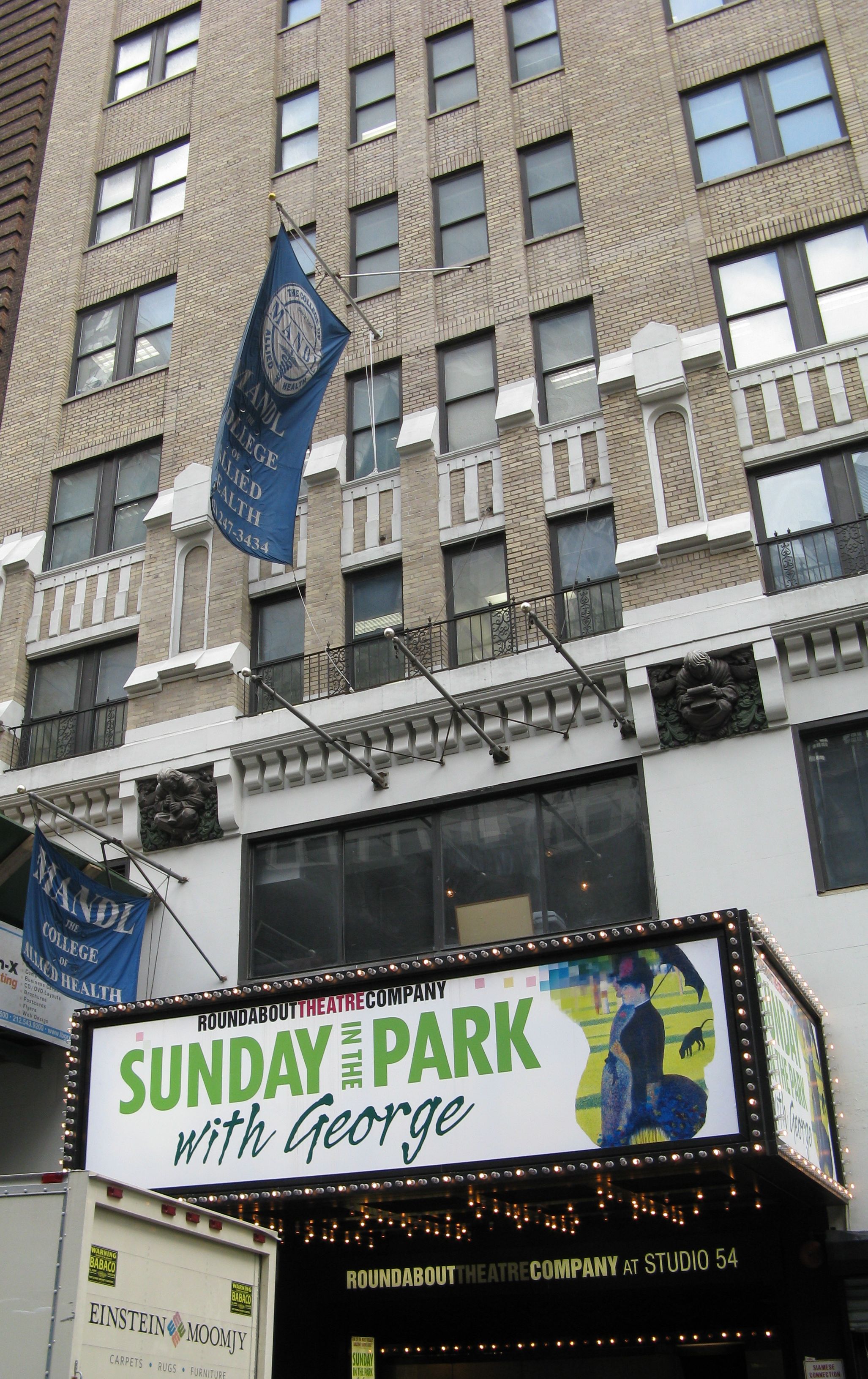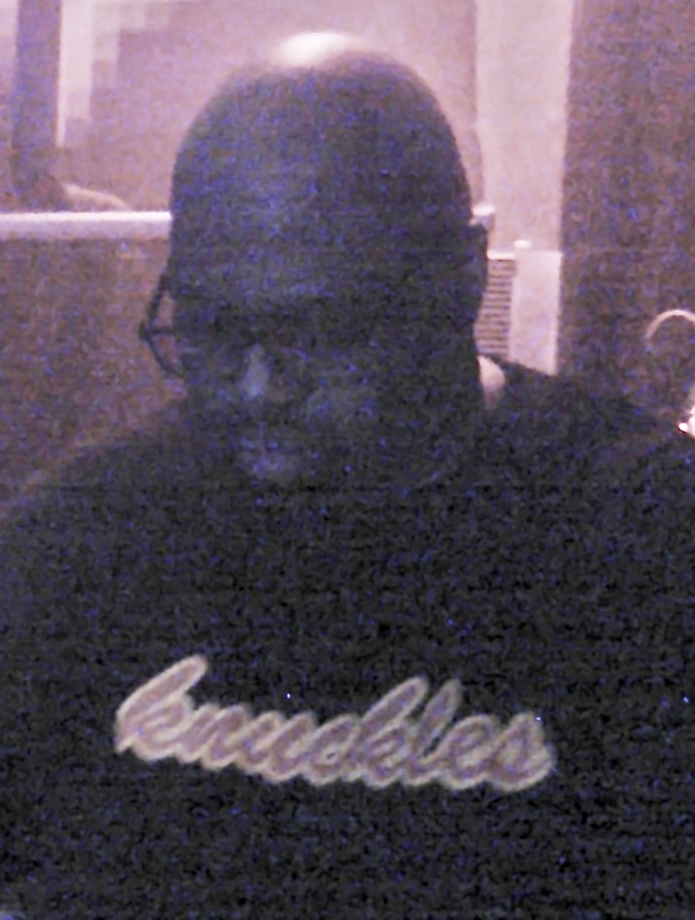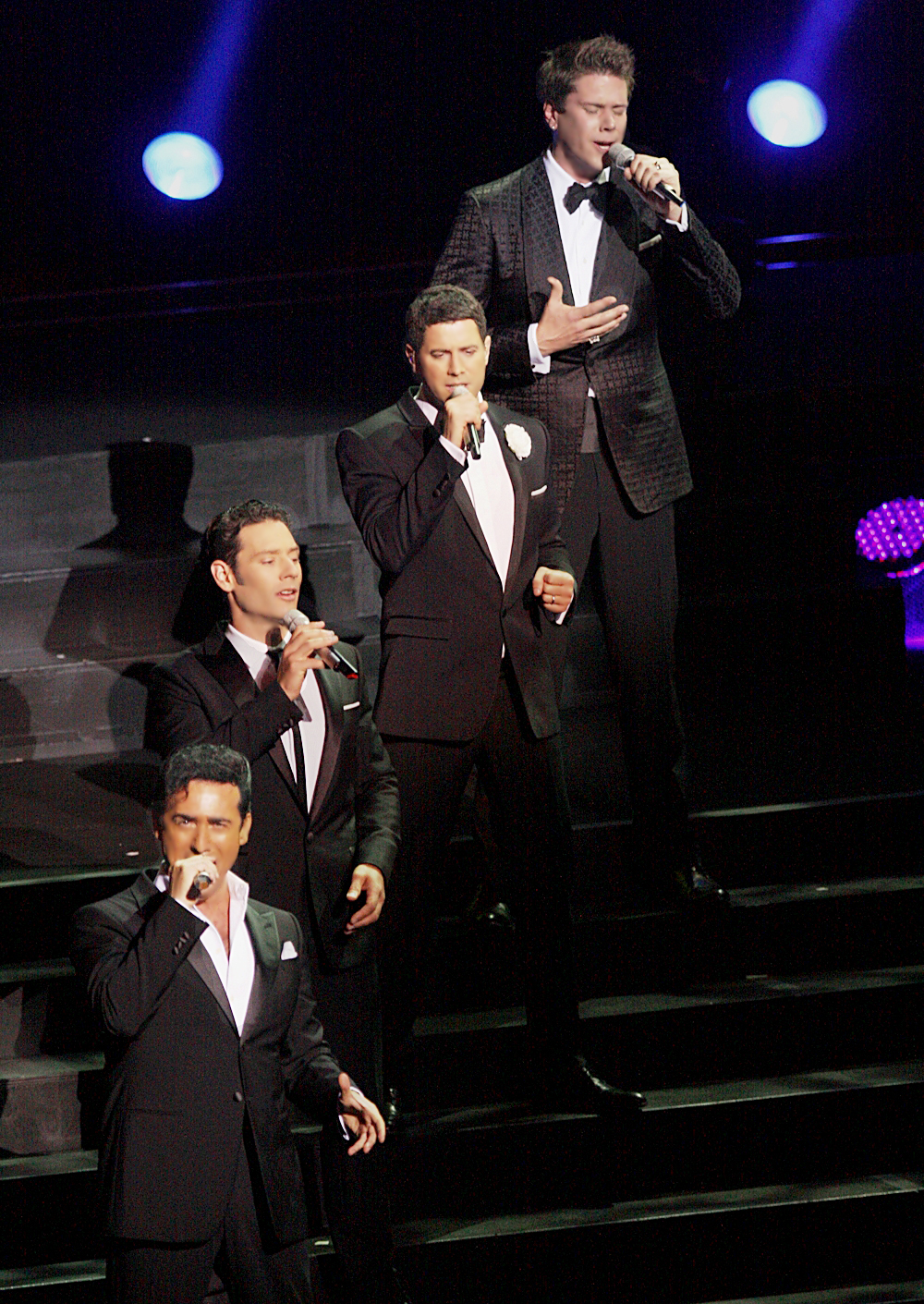|
A Night At Studio 54
''A Night at Studio 54'' is a compilation album released by Casablanca Records in June 1979, featuring disco music played frequently at New York City's famous nightclub Studio 54. Conceived by the record label and direct response television company I&M Marketing with the co-operation from Studio 54 founders Steve Rubell and Ian Schrager, ''A Night at Studio 54'' was also a double album, with its music segued between tracks by disc jockeys Marc Paul Simon and Roy Thode for continuous playing, reminiscent of the nightclub itself. The album was originally going to contain crowd noise recorded at the club too, but the idea was dropped before release as it brought a decrease in sound quality. Believing the album wouldn't sell with traditional promotion based on the album's content being readily available elsewhere, I&M Marketing's innovative campaign for the album saw them spend $100,000 on advertising on radio and television, tagging local retailers in different regions on the spot. ... [...More Info...] [...Related Items...] OR: [Wikipedia] [Google] [Baidu] |
Various Artists
A compilation album comprises tracks, which may be previously released or unreleased, usually from several separate recordings by either one or several performers. If by one artist, then generally the tracks were not originally intended for release together as a single work, but may be collected together as a greatest hits album or box set. If from several performers, there may be a theme, topic, time period, or genre which links the tracks, or they may have been intended for release as a single work—such as a tribute album. When the tracks are by the same recording artist, the album may be referred to as a retrospective album or an anthology. Content and scope Songs included on a compilation album may be previously released or unreleased, usually from several separate recordings by either one or several performers. If by one artist, then generally the tracks were not originally intended for release together as a single work, but may be collected together as a greatest hits ... [...More Info...] [...Related Items...] OR: [Wikipedia] [Google] [Baidu] |
Discotheque
A nightclub (music club, discothèque, disco club, or simply club) is an entertainment venue during nighttime comprising a dance floor, lightshow, and a stage for live music or a disc jockey (DJ) who plays recorded music. Nightclubs generally restrict access to people in terms of age, attire, personal belongings, and inappropriate behaviors. Nightclubs typically have dress codes to prohibit people wearing informal, indecent, offensive, or gang-related attire from entering. Unlike other entertainment venues, nightclubs are more likely to use bouncers to screen prospective patrons for entry. The busiest nights for a nightclub are Friday and Saturday nights. Most nightclubs cater to a particular music genre or sound for branding effects. Some nightclubs may offer food and beverages (including alcoholic beverages). History Early history In the United States, New York increasingly became the national capital for tourism and entertainment. Grand hotels were built for upscal ... [...More Info...] [...Related Items...] OR: [Wikipedia] [Google] [Baidu] |
Ticknor & Fields
Ticknor and Fields was an American publishing company based in Boston, Massachusetts. Founded as a bookstore in 1832, the business would publish many 19th century American authors including Ralph Waldo Emerson, Nathaniel Hawthorne, Henry James, Henry Wadsworth Longfellow, Harriet Beecher Stowe, Henry David Thoreau, and Mark Twain. It also became an early publisher of ''The Atlantic Monthly'' and ''North American Review''. The firm was named after founder William Davis Ticknor and apprentice James T. Fields, although the names of additional business partners would come and go, notably that of James R. Osgood in the firm's later years. Financial problems led Osgood to merge the company with the publishing firm of Henry Oscar Houghton in 1878, forming a precursor to the modern publisher Houghton Mifflin Harcourt. Houghton Mifflin revived the Ticknor and Fields name as an imprint from 1979 to 1989. Company history Early years In 1832 William Davis Ticknor and John All ... [...More Info...] [...Related Items...] OR: [Wikipedia] [Google] [Baidu] |
Rock Albums Of The Seventies
''Christgau's Record Guide: Rock Albums of the Seventies'' is a music reference book by American music journalist and essayist Robert Christgau. It was first published in October 1981 by Ticknor & Fields. The book compiles approximately 3,000 of Christgau's capsule album reviews, most of which were originally written for his "Consumer Guide" column in ''The Village Voice'' throughout the 1970s. The entries feature annotated details about each record's release and cover a variety of genres related to rock music. Christgau's reviews are informed by an interest in the aesthetic and political dimensions of popular music, a belief that it could be consumed intelligently, and a desire to communicate his ideas to readers in an entertaining, provocative, and compact way. Many of the older reviews were rewritten for the guide to reflect his changed perspective and matured stylistic approach. He undertook an intense preparation process for the book during 1979 and 1980, which temporarily h ... [...More Info...] [...Related Items...] OR: [Wikipedia] [Google] [Baidu] |
Billboard (magazine)
''Billboard'' (stylized as ''billboard'') is an American music and entertainment magazine published weekly by Penske Media Corporation. The magazine provides music charts, news, video, opinion, reviews, events, and style related to the music industry. Its music charts include the Hot 100, the 200, and the Global 200, tracking the most popular albums and songs in different genres of music. It also hosts events, owns a publishing firm, and operates several TV shows. ''Billboard'' was founded in 1894 by William Donaldson and James Hennegan as a trade publication for bill posters. Donaldson later acquired Hennegan's interest in 1900 for $500. In the early years of the 20th century, it covered the entertainment industry, such as circuses, fairs, and burlesque shows, and also created a mail service for travelling entertainers. ''Billboard'' began focusing more on the music industry as the jukebox, phonograph, and radio became commonplace. Many topics it covered were spun-off ... [...More Info...] [...Related Items...] OR: [Wikipedia] [Google] [Baidu] |
Richie Kaczor
Richie Kaczor (9 December 1952 – April 1993) was an early DJ during disco's infancy in the 1970s. His DJ career began in New Jersey, Kaczor played at clubs in New York City and surrounding states before being asked by nightclub owners Steve Rubell and Ian Schrager to begin a residency at Studio 54. Kaczor, along with Nicky Siano, were the two original DJs to play at the New York venue. At Studio 54, Kaczor most notably championed Gloria Gaynor's track "I Will Survive", a song which became widely accepted as a disco anthem. Siano asserts that it was Kaczor who first noticed the track, originally a B-side to " Substitute", and turned it into a success. It became so well associated with Studio 54 that fellow DJs from Kaczor's time were amazed when the song was not included in the sound track to '' 54'', a movie based on Studio 54. Tom Moulton Thomas Jerome Moulton (, ; born November 29, 1940) is an American record producer. He experimented with remix in disco music and this l ... [...More Info...] [...Related Items...] OR: [Wikipedia] [Google] [Baidu] |
DJ Set
A DJ mix or DJ mixset is a sequence of musical tracks typically mixed together to appear as one continuous track. DJ mixes are usually performed using a DJ mixer and multiple sounds sources, such as turntables, CD players, digital audio players or computer sound cards, sometimes with the addition of samplers and effects units, although it is possible to create one using sound editing software. DJ mixing is significantly different from live sound mixing. Remix services were offered beginning in the late 1970s in order to provide music which was more easily beatmixed by DJs for the dancefloor. One of the earliest DJs to refine their mixing skills was DJ Kool Herc. Francis Grasso was the first DJ to use headphones and a basic form of mixing at the New York City nightclub Sanctuary. Upon its release in 2000, Paul Oakenfold's '' Perfecto Presents: Another World'' became the biggest selling DJ mix album in the US. Music A DJ mixes music from genres that fit into the more gene ... [...More Info...] [...Related Items...] OR: [Wikipedia] [Google] [Baidu] |
Crossover Music
Crossover is a term applied to musical works or performers who appeal to different types of audience. This can be seen, for example, (especially in the United States) when a song appears on two or more of the record charts which track differing musical styles or genres. If the second chart combines genres, such as a "Hot 100" list, the work is not a ''crossover''. In some contexts the term "crossover" can have negative connotations associated with cultural appropriation, implying the dilution of a music's distinctive qualities to appeal to mass tastes. For example, in the early years of rock and roll, many songs originally recorded by African-American musicians were re-recorded by white artists such as Pat Boone in a more toned-down style, often with changed lyrics, that lacked the hard edge of the original versions. These covers were popular with a much broader audience. Crossover frequently results from the appearance of the music in a film soundtrack. For instance, Sacre ... [...More Info...] [...Related Items...] OR: [Wikipedia] [Google] [Baidu] |
AM Radio
AM broadcasting is radio broadcasting using amplitude modulation (AM) transmissions. It was the first method developed for making audio radio transmissions, and is still used worldwide, primarily for medium wave (also known as "AM band") transmissions, but also on the longwave and shortwave radio bands. The earliest experimental AM transmissions began in the early 1900s. However, widespread AM broadcasting was not established until the 1920s, following the development of vacuum tube receivers and transmitters. AM radio remained the dominant method of broadcasting for the next 30 years, a period called the " Golden Age of Radio", until television broadcasting became widespread in the 1950s and received most of the programming previously carried by radio. Subsequently, AM radio's audiences have also greatly shrunk due to competition from FM (frequency modulation) radio, Digital Audio Broadcasting (DAB), satellite radio, HD (digital) radio, Internet radio, music streaming servi ... [...More Info...] [...Related Items...] OR: [Wikipedia] [Google] [Baidu] |
Robert Christgau
Robert Thomas Christgau ( ; born April 18, 1942) is an American music journalist and essayist. Among the most well-known and influential music critics, he began his career in the late 1960s as one of the earliest professional rock critics and later became an early proponent of musical movements such as hip hop, riot grrrl, and the import of African popular music in the West. Christgau spent 37 years as the chief music critic and senior editor for ''The Village Voice'', during which time he created and oversaw the annual Pazz & Jop critics poll. He has also covered popular music for ''Esquire'', ''Creem'', ''Newsday'', ''Playboy'', ''Rolling Stone'', ''Billboard'', NPR, ''Blender'', and ''MSN Music'', and was a visiting arts teacher at New York University. CNN senior writer Jamie Allen has called Christgau "the E. F. Hutton of the music world – when he talks, people listen." Christgau is best known for his terse, letter-graded capsule album reviews, composed in a concentrat ... [...More Info...] [...Related Items...] OR: [Wikipedia] [Google] [Baidu] |
Morris Levy
Morris Levy (born Moishe Levy; August 27, 1927 – May 21, 1990) was an American entrepreneur in the fields of jazz clubs, music publishing, and the independent record industry. Levy was cofounder and owner of Roulette Records, founding partner of the Birdland jazz club and the Roulette Room. He was a prominent subject of investigations into organized crime and the music industry, and was convicted of extortion shortly before his death. At the peak of his business career, Levy owned more than 90 companies employing 900 people, including record-pressing plants, tape-duplicating plants, a distribution company, a prominent New England chain of 81 record stores (Strawberries), and many record labels. Levy, who went by "Moishe" or "Mo" within the record industry, was described by ''Billboard'' magazine as "one of the record industry's most controversial and flamboyant players" and by ''Variety'' as "The Octopus", for his far-reaching control, disproportionate to the size of his com ... [...More Info...] [...Related Items...] OR: [Wikipedia] [Google] [Baidu] |
Disco Music
Disco is a genre of dance music and a subculture that emerged in the 1970s from the United States' urban nightlife scene. Its sound is typified by four-on-the-floor beats, syncopated basslines, string sections, brass and horns, electric piano, synthesizers, and electric rhythm guitars. Disco started as a mixture of music from venues popular with Italian Americans, Hispanic and Latino Americans and Black Americans "'Broadly speaking, the typical New York discothèque DJ is young (between 18 and 30) and Italian,' journalist Vince Lettie declared in 1975. ..Remarkably, almost all of the important early DJs were of Italian extraction .. Italian Americans have played a significant role in America's dance music culture .. While Italian Americans mostly from Brooklyn largely created disco from scratch .." in Philadelphia and New York City during the late 1960s and early 1970s. Disco can be seen as a reaction by the 1960s counterculture to both the dominance of rock music and the ... [...More Info...] [...Related Items...] OR: [Wikipedia] [Google] [Baidu] |

.jpg)






.jpg)